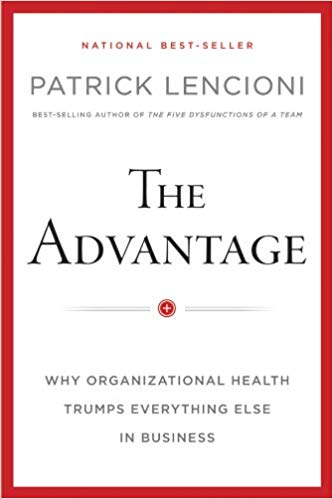
What do we mean by having clarity within an organization?
Patrick Lencioni in his book, The Advantage, describes clarity as the alignment of values, goals, strategies and behaviors so that there is little possibility for confusion, chaos or infighting within the organization.
Lencioni tells us that there are six critical questions we must answer with our leadership team to achieve clarity.
Six Critical Questions For Creating Clarity
- Why do we exist?
- How do we behave?
- What do we do?
- How will we succeed?
- What is most important right now?
- Who must do what?
Difficulties in Achieving Clarity
One difficulty we must overcome is a lack of cohesive leadership within our organization.
Also, team members can fall into a trap of catchy and popular phrases and slogans when answering the six critical questions.
This is perhaps due to another difficulty, not taking the time to answer the six critical questions. These questions may seem easy, but the answers require thought and time. Not months, but depending on the size of your organization, one to three days of focused thought and discussion.
In answering these six critical questions there are no right or wrong answers.
There are two important factors in finding an answer:
- Does this answer correctly direct the organization?
- Can we all get behind this answer and commit to act?
Paralysis by Analysis
Leadership teams can get caught in the trap of trying to create a perfect plan.
There is no perfect plan. What is important is to find an answer that brings clarity to your organization’s values, goals, strategies and actions.
As General George Patton said, “A good plan violently executed today is better than a perfect plan executed next week.”
Let’s take a quick look at our six questions.
Question 1: Why do we exist?
Everyone in your organization needs to know that at the heart of what they do lies something grand and inspirational.
Daniel Pink in his book, DRiVE, offers a simple exercise to do with team members. He calls this exercise, what is the purpose of the organization?
Hand out a 3 x 5 index card to team members and simply ask, “What is the purpose of our organization?”
The answers will help you see if your organization needs clarity.
Watch 110 second video of Dan Pink describing this exercise.
Question 2: How do we behave?
How folks behave in your organization is based on their perception of your organization’s core values.
Core values are a small set of principles, usually only two or three, that guide decisions and behaviors over time and define the spirit of your organization.
Question 3: What do we do?
This is a simple straightforward answer. You might think of it as a one sentence definition of your organization.
Some examples follow:
- A credit card company: We provide payment products and extend credit to customers.
- A church: We provide worship services, counseling and religious education for our membership.
- A Montessori school: We provide children learning opportunities using Montessori principles, methodologies and materials.
Question 4: How will we succeed?
This is the question that helps you figure out your key strategies, your overall plan and how you differentiate your organization from the competition.
Question 5: What is important right now?
Lencioni tell us that to create focus and alignment an organization must have a single top priority in a given time frame.
“If we accomplish only one thing during the next x months, what would it be?”
Question 6: Who must do what?
Haven’t we all been in situations where we thought someone else was taking care of a critical task?
Or conversely, found out that our efforts were duplicated because of lack of clarity of who was to do what?
Lack of clarity around this question creates a breeding ground for infighting.
An exercise to help with clarity around this question: have team members describe their functional tasks, both daily and long-term. Look at the overlap. Use the answers to create clarity around division of labor.
These six critical questions create your strategic plan or “playbook”, as Lencioni describes it.
Lencioni recommends that the playbook be short and easy to review, perhaps two pages in length.
The leadership team keeps the playbook with them at all times. On their desk. To staff meetings. As a quick reference when communicating with employees.
Your playbook is your cheat sheet to ongoing clarity.
Answer the six critical questions to devise your playbook.
Take the time to lead your organization to create clarity.
Download | Checklist For Creating Clarity

Suggested reading:
The Advantage: Why Organizational Health Trumps Everything Else in Business, pages 73 to 138.
by Patrick Lencioni

DRiVE: The Surprising Truth about What Motivates Us
by Daniel Pink

Start With Why: How Great Leaders Inspire Everyone To Take Action
by Simon Sinek

One Response to “Creating Clarity”